I firmly believe that the second amendment is for absolutely everyone. It’s a right inherent to our existence; as such, the limitations to own, shoot, and enjoy firearms shouldn’t end if you have disabilities.
Believe it or not, the shooting industry is quite open to disabled shooters.
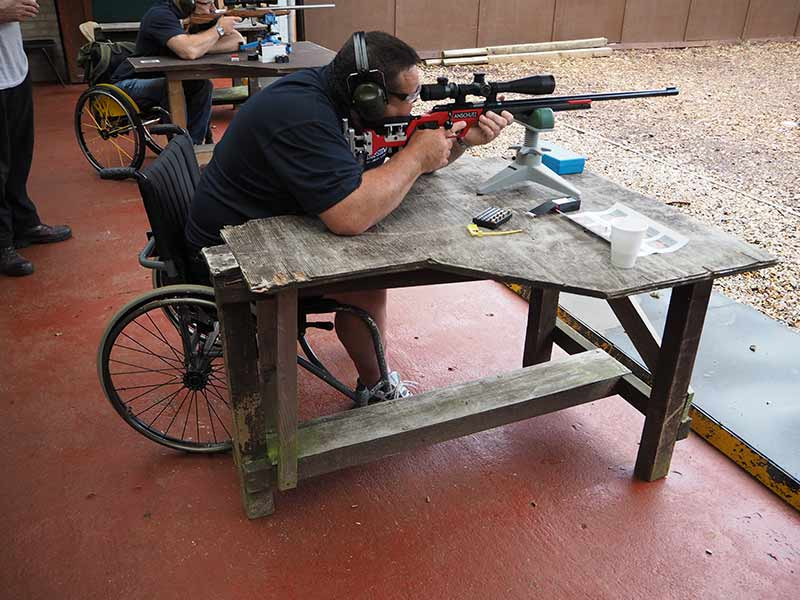
In fact, there are numerous pieces of gear aimed at disabled shooters, as well as numerous programs and competitions aimed to allow shooters with all manners of disabilities to compete.
With that in mind, I wanted to provide a resource or a directory of some gear, some guns, and organizations that are either purposefully designed for disabled shooters or can help disabled shooters.
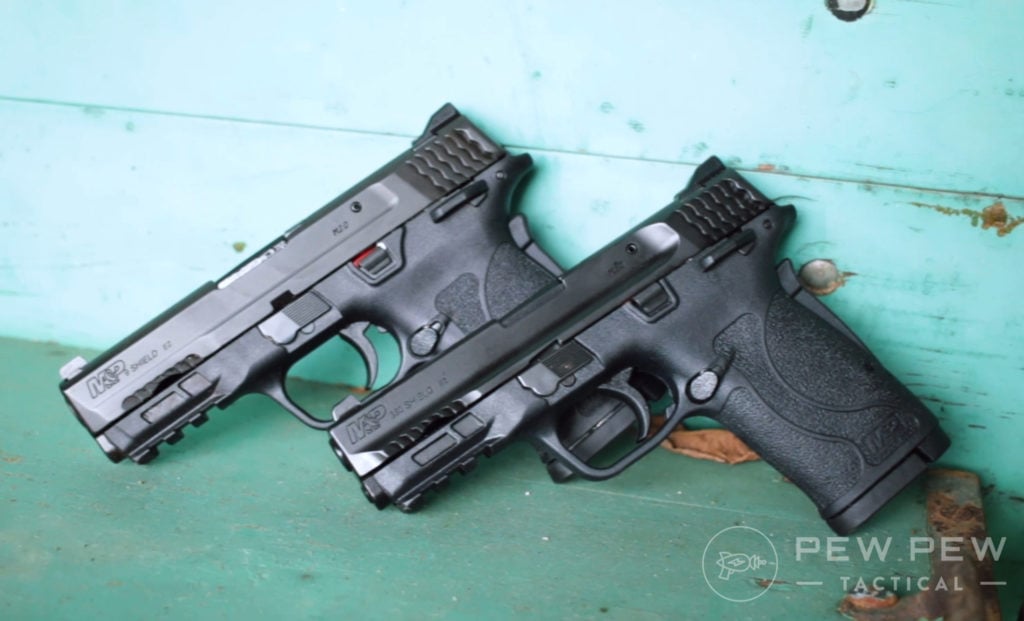
Disability is a simple term for a diverse group of situations. With that in mind, I’m trying to address a wide variety of disabilities, both minor and major.
Hopefully, if you are a disabled person looking to start shooting, we can guide you in the right direction to start your ballistic journey.
Here are the guns, gear, and organizations that might be able to help.
THE QUICK LIST
-
Best Mag Loader
-
Best Rifle Support
-
Best Adaptive Optic Add On
-
Best for Auditory
-
Best Pistol Charging Handle
-
Best for Rifles
-
Best Red Dot
Table of Contents
Loading…
Best Guns & Gear for Disabled Shooters
1. Magazine Loaders
Loading magazines can be very challenging for shooters with hand strength issues enough that many might turn to a revolver to avoid it.
As someone who suffers from arthritis, I get it.
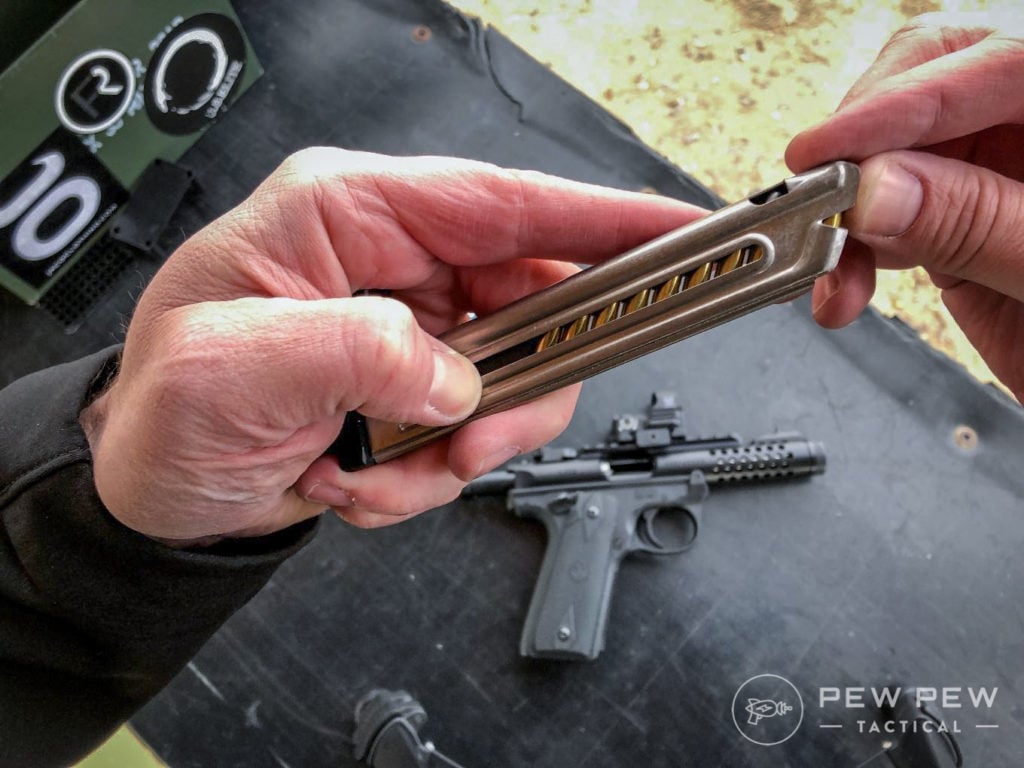
A magazine loader is a fantastic option for loading your weapon’s magazine. There are tons and tons of magazine loaders on the market too.
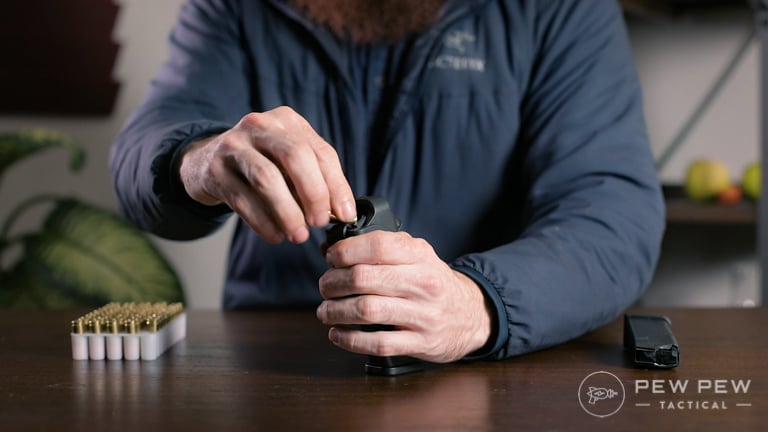
I like the Maglula loaders…they are small, affordable, and very effective.
Maglula also makes them for rifles and handguns of nearly all types.
Prices accurate at time of writing
Prices accurate at time of writing
-
25% off all OAKLEY products - OAKLEY25
Copied! Visit Merchant
Another good option is the ETS C.A.M. loaders. These are designed for AR rifles and 9mm and .40 S&W handgun magazines.
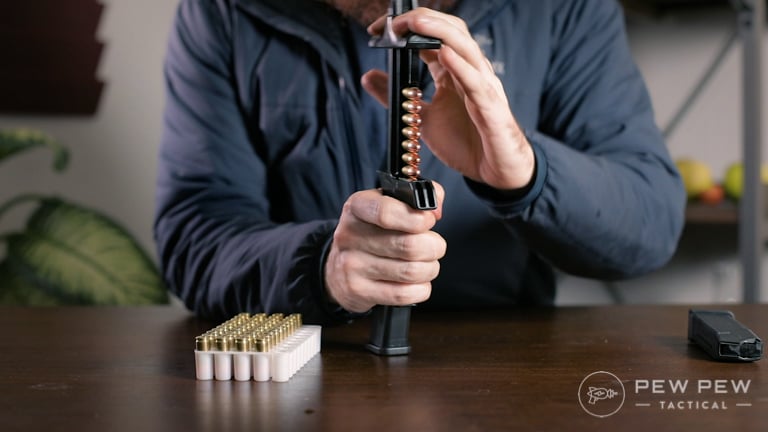
The main benefit of this option is how fast it allows you to load your magazine. Downside? It requires a little more hand strength than the Maglula.
Toss ’em on, load ’em up, and leave your hand strength for shooting.
Prices accurate at time of writing
Prices accurate at time of writing
-
25% off all OAKLEY products - OAKLEY25
Copied! Visit Merchant
2. Bipods, Sleds, and Tripods
A bipod, tripod, or sled can be a game-changer if you have limited strength and mobility. Let’s break down how each of these tools can help you.
Bipods attach to the front of the weapon and allow it to rest most of the weight on the bipod. It does require the shooter to support the rear 1/3rd of the platform.
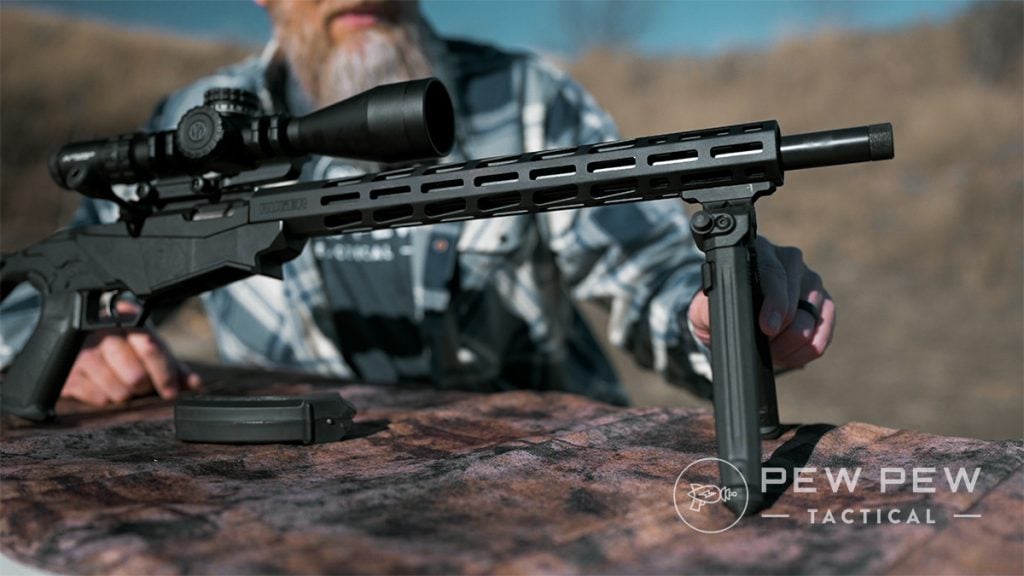
A good bipod can make a light rifle very accessible without needing a more complicated setup.
Prices accurate at time of writing
Prices accurate at time of writing
-
25% off all OAKLEY products - OAKLEY25
Copied! Visit Merchant
Tripods are great big devices that have three legs and support the entire rifle. You just need to get behind the stock and aim in. It’s very supportive and makes shooting easy.
It’s somewhat large and does require some setup before use.
Prices accurate at time of writing
Prices accurate at time of writing
-
25% off all OAKLEY products - OAKLEY25
Copied! Visit Merchant
Sleds support the entirety of the rifle and place it on a bench position.
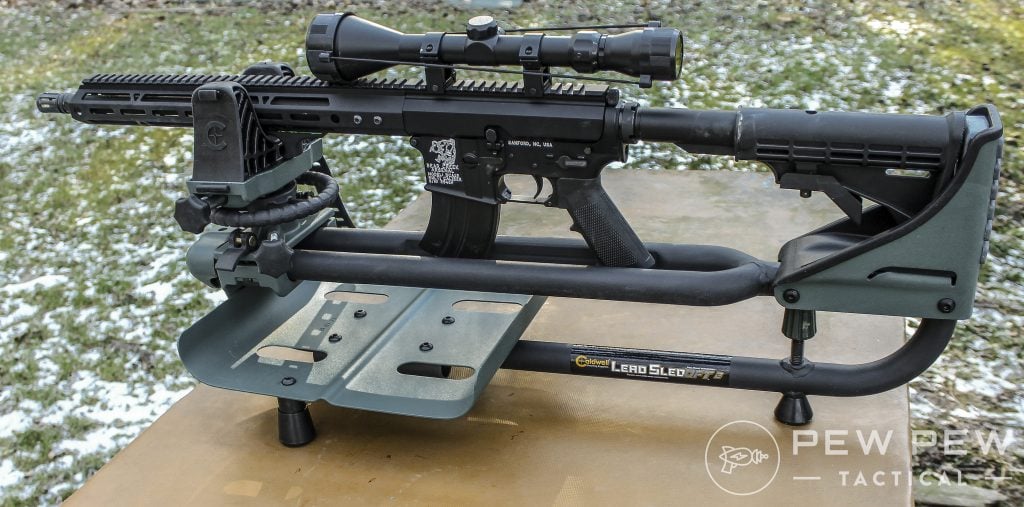
It’s smaller than a tripod, supports the entire weapon’s weight, and, with weight, absorbs recoil as well.
The weights and size will require a bit of setup prior to use.
Prices accurate at time of writing
Prices accurate at time of writing
-
25% off all OAKLEY products - OAKLEY25
Copied! Visit Merchant
3. Digital Crosshairs
Digital Crosshairs is a camera system that attaches to your rifle scope and provides you with a screen that captures your sight picture.
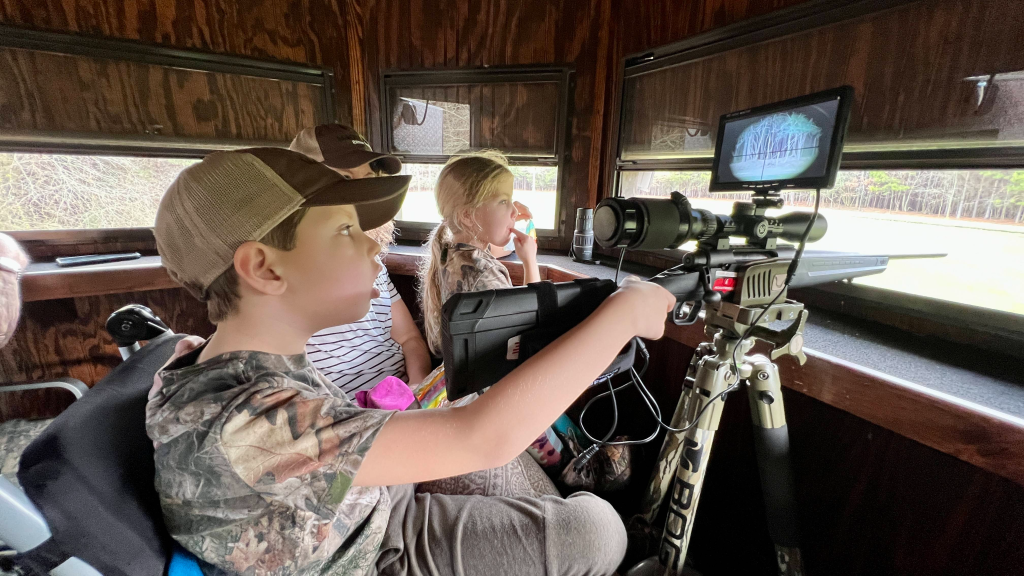
This allows shooters to use a scoped weapon paired with various accessories with limited movement. Digital Crosshairs is a great way for disabled shooters to hunt or target shoot.
This helps people with vision and mobility issues, especially in more dynamic environments like a hunting blind. It’s a simple solution to a complicated problem.
Prices accurate at time of writing
Prices accurate at time of writing
-
25% off all OAKLEY products - OAKLEY25
Copied! Visit Merchant
4. Suppressors
Suppressors are a great way to ease any shooter into ballistic joy. While a large focus is on serving physically disabled shooters, a suppressor can help shooters with less visible disabilities.
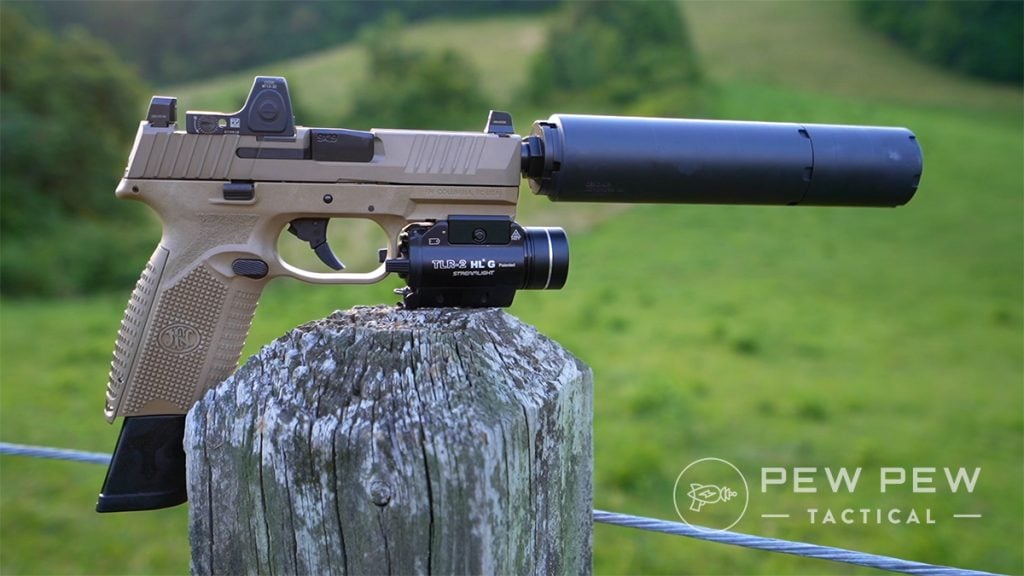
This includes noise sensitivity and auditory input issues. However, a suppressor alone isn’t going to be a 100% fix.
A suppressor paired with a .22 LR or PCC loaded with subsonic ammunition is a great way to reduce noise and improve the comfort of shooters.
Prices accurate at time of writing
Prices accurate at time of writing
-
25% off all OAKLEY products - OAKLEY25
Copied! Visit Merchant
A friend of mine has a son who wants to learn to shoot but has some audio processing issues. He has become quite the shooter with his suppressor-equipped Ruger 10/22.
5. Handgun Charging Handles
Another hand strength issue comes down to the ability to efficiently move the slide of a handgun against the recoil spring to load or clear the weapon.
Some shooters with mobility issues and hand strength may have issues doing just that. Luckily charging handles exist to make this a fair bit easier.
Prices accurate at time of writing
Prices accurate at time of writing
-
25% off all OAKLEY products - OAKLEY25
Copied! Visit Merchant
Most of these are designed for Glock but not all. There are options like the Clip Draw charging handle, which produces a wide variety of options for a ton of different handguns.
Recover Tactical makes several charging handles for popular platforms.
These snap-on devices can be game changers for shooters trying to maintain complete and safe control over their firearms.
6. Foregrips
Foregrips can be a game changer for people with shoulder disabilities.
I’m one of those people and have post-traumatic arthritis in my shoulder. When shooting long guns, I’ve found that certain hand angles are better than others, and foregrips made a huge difference to me.
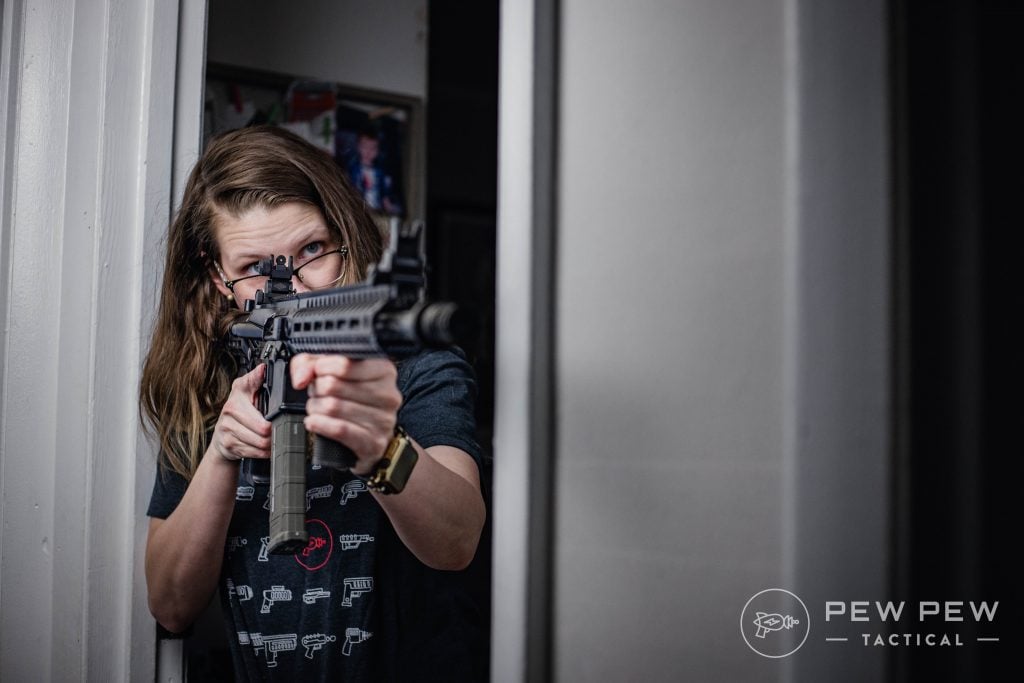
Vertical foregrips and angled foregrips can help you find the right placement to support your gun without causing extra stress to your shoulder.
There are tons of different options out there, and a basic Bravo Company Gunfighter grip or Magpul AFG can make a big difference.
Prices accurate at time of writing
Prices accurate at time of writing
-
25% off all OAKLEY products - OAKLEY25
Copied! Visit Merchant
The Mid-Evil 360 VFG is likely the best option. It allows you to try out 360 degrees of different angles to find the right one to provide total support.
Anyone with shoulder issues will likely understand how a slight angle change can make a big difference.
Prices accurate at time of writing
Prices accurate at time of writing
-
25% off all OAKLEY products - OAKLEY25
Copied! Visit Merchant
7. Red Dots
Red dots are outstanding additions to rifles, shotguns, handguns, and whatever other firearms you might have.
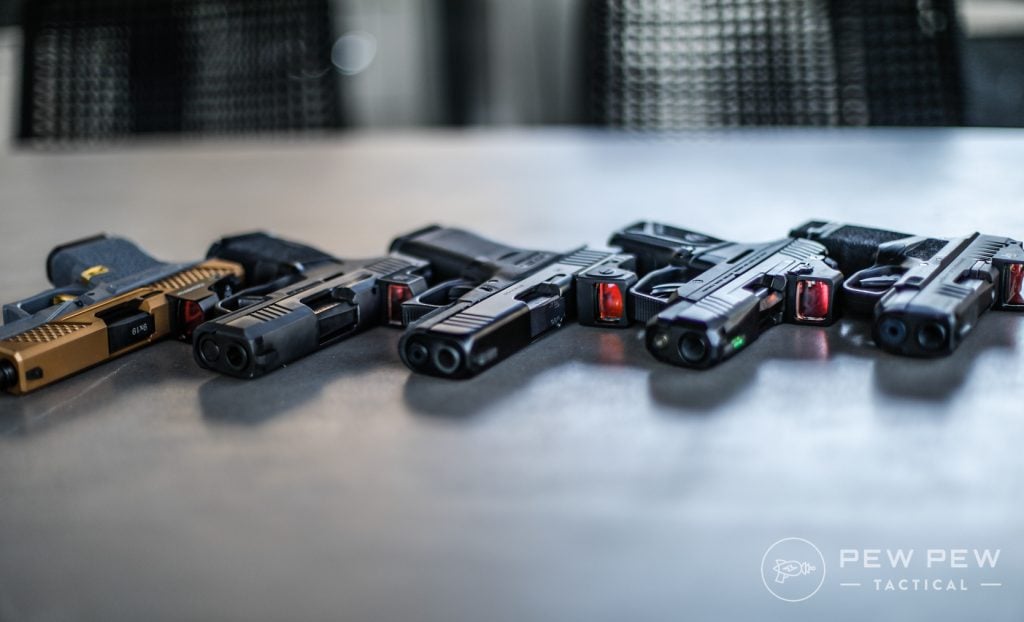
A red dot can be valuable for shooters with mobility and vision issues, and various risers and designs make weapons much more accessible and simplistic to accurately shoot and handle.
Which red dots?
Prices accurate at time of writing
Prices accurate at time of writing
-
25% off all OAKLEY products - OAKLEY25
Copied! Visit Merchant
I guess it depends on the gun, but a great value in the red dot world is a company called Holosun.
Something as simple as the Holosun 403 or 507C can be a great addition to make your rifle, handgun, or shotgun easier to shoot.
8. Ransom Assisted Trigger
The VA teamed up with Ransom International to create the Ransom Assisted Trigger. This trigger actually used to be called the VA Puff Trigger, but that name didn’t stick.
The Ransom Assisted Trigger is an admittedly complicated device but an effective option for severely disabled shooters.
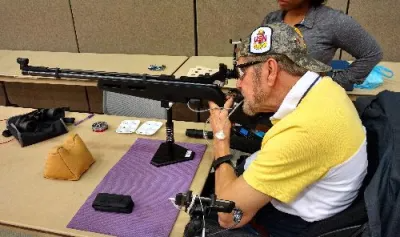
The Ransom Assisted Trigger is designed for shooters with very limited mobility. It can work on air guns, paintball guns, and real steel rifles of various types. A semi-auto design would likely be the best option for a limited-mobility shooter.
The RAT is an electronic actuator that gives shooters an alternative to pulling the trigger.
Prices accurate at time of writing
Prices accurate at time of writing
-
25% off all OAKLEY products - OAKLEY25
Copied! Visit Merchant
It connects to the trigger and, when activated, pulls the trigger of a standard rifle. Ransom has designed three different options. One includes a puff tube that allows you to fire the weapon with a breath of air.
Additionally, they produce a foot pedal and a button to fire the weapon. A 3.5mm port also allows shooters to use a multitude of custom devices that can be designed to accommodate a wide variety of shooters.
9. Be Adaptive Lineup
Be Adaptive is an outdoors company aimed at providing gear to make shooting, fishing, and archery easier for disabled shooters. I’m choosing their entire catalog for this spot because it’s huge, diverse, and effective.
For shooters, the Be Adaptive lineup includes things like a bite switch to pull the trigger of firearms, finger and hand supports to help pull the trigger, scope camera systems, and various mounts for handguns and rifles.
You can mount your weapon of choice to a wheelchair, bench, or wherever, allowing the shooter to safely and effectively fire their weapon and enjoy the experience.
These products are some of the most diverse and interesting on the market.
10. Smith & Wesson EZ Series
The Smith & Wesson EZ series, including the Equalizer, was a very smart move by S&W.
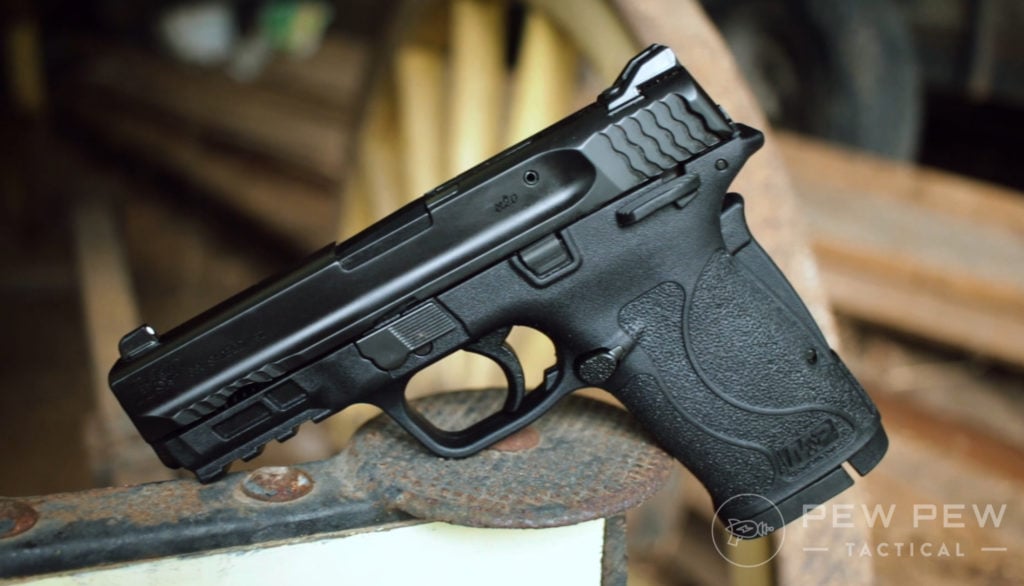
These handguns are in 9mm and .380 ACP and designed for shooters with hand strength issues. They feature an easy-to-load magazine, an easy-to-rack slide, and a reduced recoil design.
They are very lightweight, easy to shoot, and easy to control. The EZ handguns are very easy to shoot and provide shooters with reduced strength, an option for concealed carry, and even home defense.
Prices accurate at time of writing
Prices accurate at time of writing
-
25% off all OAKLEY products - OAKLEY25
Copied! Visit Merchant
Plus, they chamber capable and common calibers and are available on a variety of platforms.
Programs for Disabled Shooters
NRA Adaptive Shooter Program
I give the NRA a lot of hell, but it’s because I love them. I want the NRA to succeed because when they do it right, they do it well.
The NRA Adaptive Shooting Program is one thing they do right.
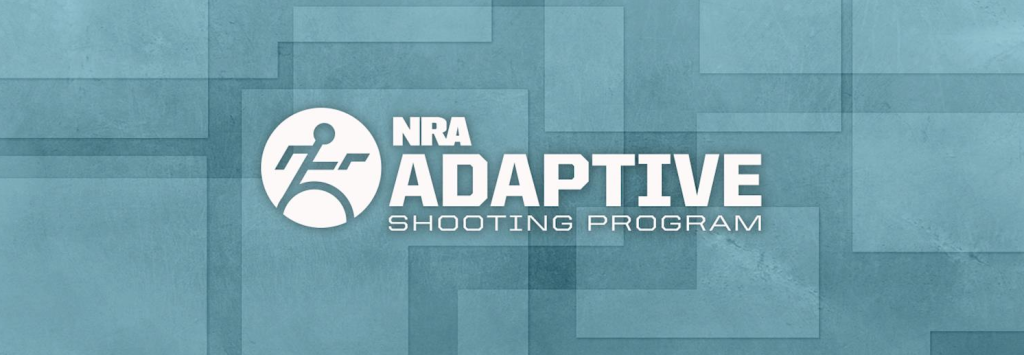
This program does several things. First, they connect disabled shooters with various ranges and programs to facilitate shooting and even hunting. The Adaptive Hunting Database connects hunters with ranches, programs, and government options to get disabled shooters hunting.
The NRA also provides a Range Accessibility Subsidy Program to ranges. This is financial assistance to help organizations and ranges be more accessible to disabled shooters.
If a range doesn’t know where to start, the Adaptive Shooter Program provides a checklist of changes ranges can make to be more accessible.
Trap Shooting
Trap shooting, in general, is very accommodating to disabled shooters.
I’m not sure where the tradition began, but it seems like trap shooting clubs consistently accommodate disabled shooters and take pride in their inclusivity.
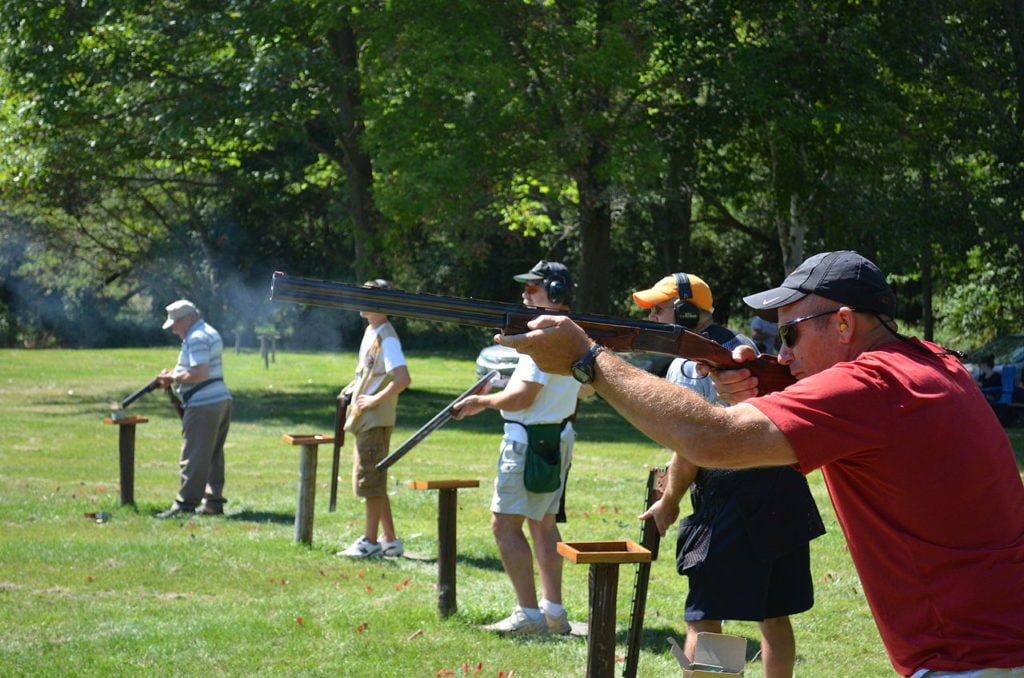
Trap shooting is also a shooting sport that’s very easy to adapt to numerous individuals. It doesn’t require rapid movement, fast follow-up shots, or speed reloads. At the same time, it’s exciting, dynamic, and adaptive.
If you have a local trap or skeet shooting range, try to reach out and see if they have club or organizational shoots. See if those organizations make accommodations for disabled members.
What gun for trap? Well, you’ll need a shotgun, and I’d suggest a 20-gauge semi-auto shotgun.
Prices accurate at time of writing
Prices accurate at time of writing
-
25% off all OAKLEY products - OAKLEY25
Copied! Visit Merchant
Specifically, the Benelli ETHOS. Benelli takes pride in producing high-quality sporting shots with minimal recoil and extremely high reliability and performance.
Adaptive Defensive Shooting Summit
If you are a disabled shooter who wants to compete in an action shooting sport, the Adaptive Defense Shooting Summit is for you.
This inclusive organization allows shooters in wheelchairs, with canes, amputation, and even disabilities like Parkinson’s, to compete in a safe environment in an action shooting sport.
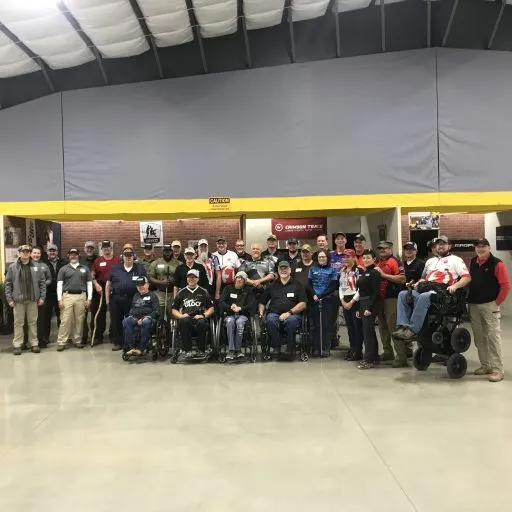
Trevor Baucom, a disabled pro shooter on Ruger’s team, founded the ADSS to provide disabled shooters with a purpose-built defensive shooting sport. It’s the first shooting sport of its kind and is designed around disabled shooters.
Sports like IDPA do allow disabled shooters and do provide special rules for disabled shooters, but the sport is still built around non-disabled shooters.
The ADSS is built around accommodating shooters of all types and providing a defensive, fast-moving shooting contest.
Final Thoughts
The overall shooting community is a very welcoming place, and I’m proud of how our industry has made strides to accommodate a wide variety of shooters.
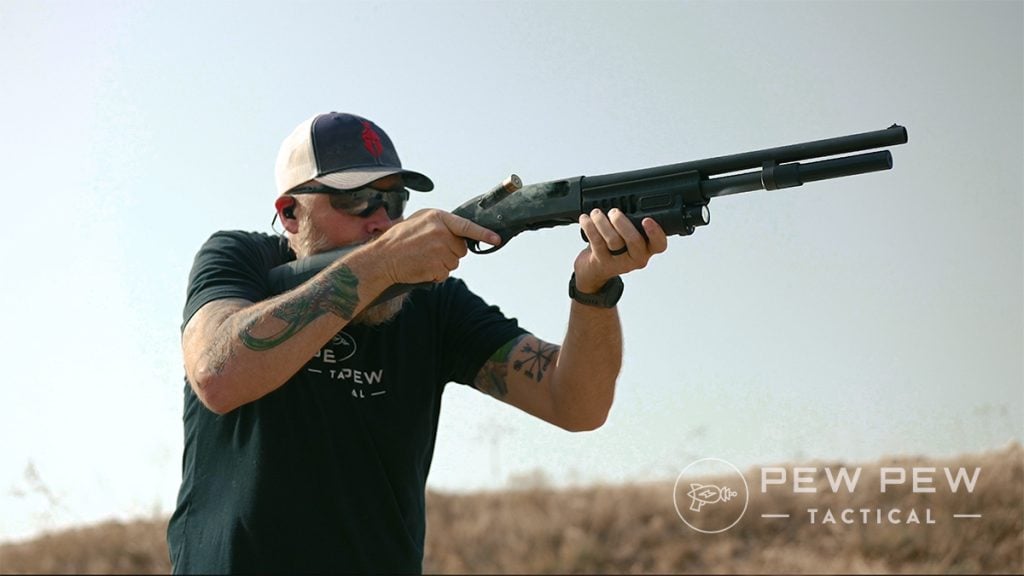
More can always be done, but I think the shooting industry is making great strides in accommodating shooters.
With that said, I would love to know the solutions the shooters in our audience have found to help overcome their disabilities. Please share below! For more tips on shooting, check out our article on 6 Helpful Tips for Disabled Shooters.

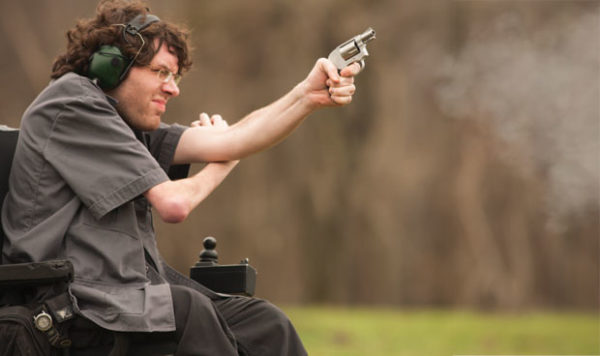
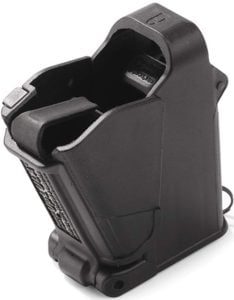
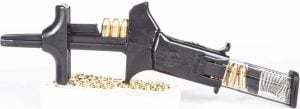
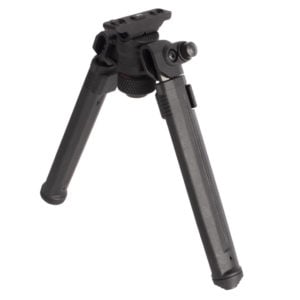
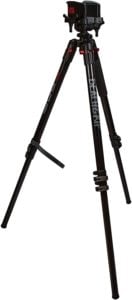
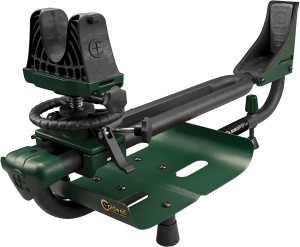
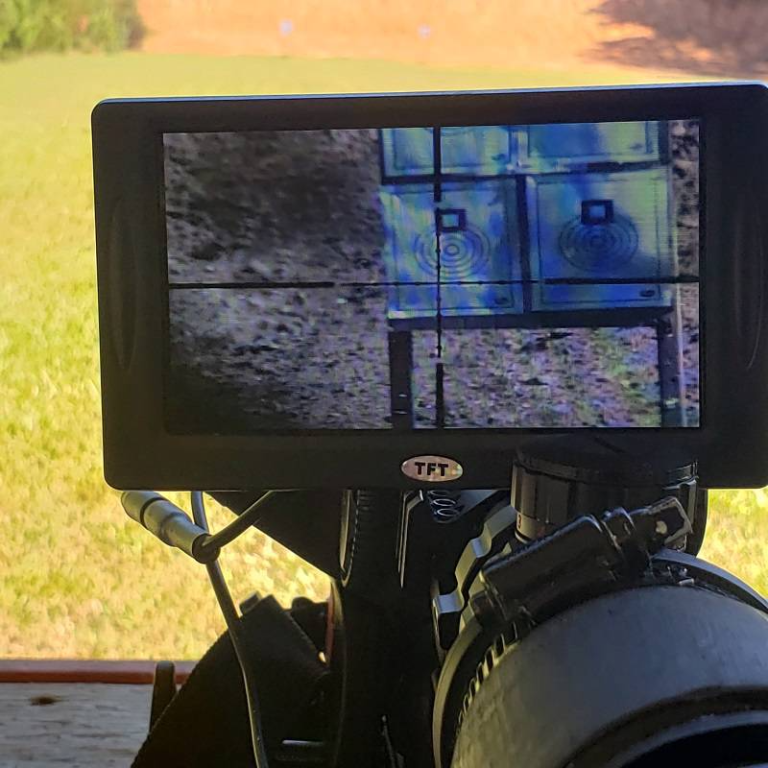
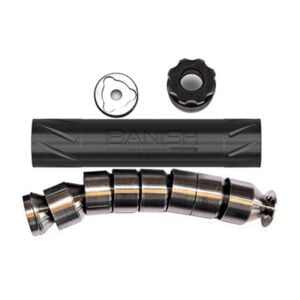
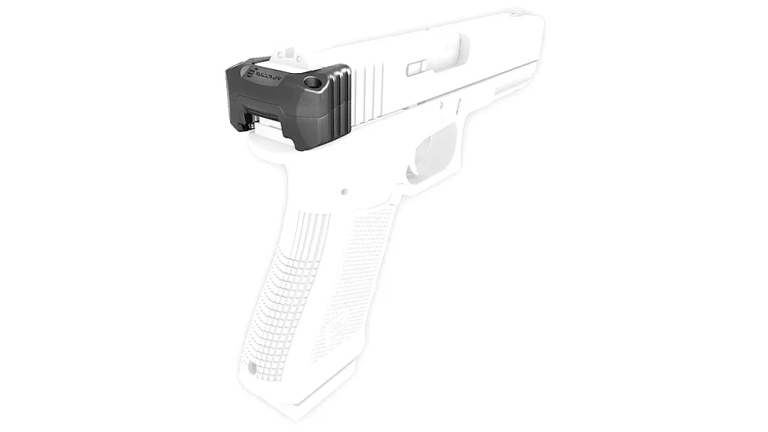
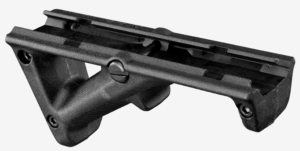
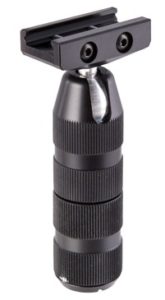
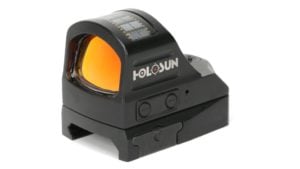
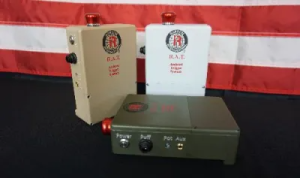
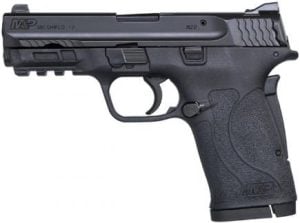

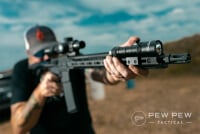

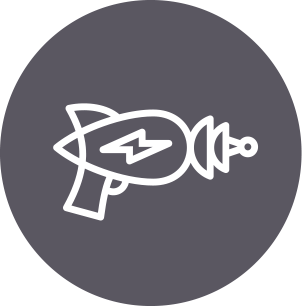




18 Leave a Reply
I couldn't agree more! The second amendment is inclusive, and everyone, including those with disabilities, should have the right to own and enjoy firearms. It's fantastic to see the shooting industry's openness to disabled shooters, with specialized gear and programs. This resource will undoubtedly be invaluable for disabled individuals seeking to embrace shooting sports. Thank you for sharing!
I am handicapped in many ways. Can't walk, blind in one eye, 80% deaf in one ear, 50% deaf in the other, arthritis in hands, the list goes on.
The Ruger Security 380 is a great gun. Easy to rack, high capacity, soft enough recoil for my pre-teen to shoot. I really appreciate you putting this list together. One thing to keep in mind though when doing so, is how income limited most of us are - look up the average disability check (then deduct for Medicare, it's not free), then average rent in the vicinity of good hospitals. Add in $2500 wheelchairs, $2000 mobility scooters, figure $500/mo. medical bills after insurance, ad nauseum, and you quickly see the problem with adding $600 screens to $250 scopes to sit atop a $450 gun that probably took a year of saving to buy.
I would like to take a moment to encourage everyone to push for pistol braces to be allowed and the SBR tax waived for the handicapped. I built a pistol (can't hold a full length rifle)with the idea of settling on a pistol brace (instead of the SBR/pistol with a stock I wanted because I can't afford the stamp, and getting to fingerprinting is near impossible), now I can do neither and have an AR pistol collecting dust and am effectively out of the shooting sports. Please push hard for this.
Thank you.
No Walther CCP? Shame on you Travis.
A other good pistol designed specifically for those with limited hand strength. Available in 9mm or .380. Easier to rack, and easier to shoot (lower recoil) thanks to its system.
Shaun Payne, a blind marksman in Utah, took 5th place in an NRA sanctioned 1000 yard match against sighted competitors on 6/25/23 using Digital Crosshairs 1000 adaptive rifle scope clip-on
I’m the guy shooting the revolver. That’s a s&w 638.
I need a way to carry two magazines for IDPA. I'd like to attach them to my partially disabled left wrist, so I can raise it to a horizontal position in front of my sternum like Dracula hiding behind his cape, with the mags upright. Then I'll drop the mag well on top of them to reload. Any ideas? I'm thinking that those cheap neoprene mag carriers may stretch enough to stick a mag in base plate first, then I'll attach them to wrist brace of some sort. But they're gonna need to retain the loaded mags even when they're upside down. Thx.
I am in a wheelchair, looking for a gun I could conceal. I have a list of guns on my mind for once I turn 21. I just don't know how I would conceal it, or what I need to look for. so far most of the guns on my list are compact/subcompact. I just don't know how I would conceal it
I’m a bit late, but I’d recommend a Ruger lcr 22lr in a philster holster. You’d an adjust for comfort on your waistline. If you’re looking for a non appendix carry option, I’d recommend either a shoulder holster with a sig 365-380 or a Chiappa rhino 20ds. Best of luck on your journey friend.
I'm quadruple amputee, (missing hands and legs) so it's hard to grip a gun or hold one after firing it. Which 1 would be da best 4 me 2 start with?
May I suggest to you the NerfSwarmfire
My hand strength has severely diminished with my disability. I used to use the .38 spcial without issue but need a much lighter trigger now The person I took my concealed class from 15 years ago had a pistol he had worked on the trigger to make it much easier to pull. I’m having problems finding anyone who does that now. Any suggestions?
Smith and Wesson ez 380
I'm a paraplegic (that is, paralyzed from high chest, down) and double amputee (at the knees). I took a 4-day handgun class using my Gen 1 Glock 17. I had no issues whatsoever with this gun, from fast-draw from a holster to consistent and accurate fire. With all the improvements that have come out in 9mm defensive loads, I can't imagine a more stable platform and round. Granted, the G17 isn't necessarily the easiest concealable gun when you're sitting in a wheelchair (G19 would be great if I could afford it), but with the proper holster set up (like something rigged right underneath my seat), I'm pretty sure it'll work for me. Have often considered carrying my Ruger P345 which is much more compact, but I'm certain that .45 round is gonna be a bit harder to follow up accurately as opposed to the 9mm. Thanks for the article! Have a great day!
I absolutely have to agree with Jose about the .327 Fed Mag round being a really good 'inbetweener' step for working your way up the caliber ladder. (if that is what you are wanting to do). However, looking at the ballistic data for the .327, you can see how an individual can have the "oomph" of better than the .38 Special +P & almost the .357 Mag in a much more controllable package.
You also have the option (in the same revolver) of "stepping" down to the .32 H&R Mag or even down to the .32S&W Long SJHP if the .327's 'felt recoil' is a little too much. All without losing too much of the ballistic performance! (well that may be a bit of a stretch to say about the .32 S&W Long SJHP) No matter, it still gives you options to work with to be able to "dial in" what works best FOR YOU.
IMHO, the .32 calibers are the best fit for todays shorter barreled carry weapons giving the best combination of threat stopping "oomph" & controllability for those follow-up shots to be on target instead of over their head. Now all we need is for the "Industry" to get behind giving the consumer more choices in the .32 offering. (both weapons & ammunition -especially in .32 H&R Mag) We need to start a campaign to change this, I wonder how we could do this? It would really help those of us suffering with disabilities.
I’m the guy in the wheelchair shooting the revolver. That’s a S&W Airweight 638 in 38 special. Not a .22lr. You can google me and it’ll prove that’s me. It’s from the photo shoot when I was on the cover of concealed carry magazine. Oleg Volk took that photo.
Thank you for posting! Just one of many errors in this article.
A .327 revolver loaded with light .32’s is a good step between .22 and .38. It also has the ability to fire magnum rounds.
I would love to go with a .327 Federal Magnum, or a .32 H&R Magnum. But it is next to impossible to find the ammunition. I did recently find a .327 in a pawn shop, and they had one box of .32 H&R Magnum ammunition for sale. But that is the only time I have ever seen either one. I have occasionally found .327 ammo online for sale, but it is very expensive. For this reason, I have decided to stick with .38 special, because it is available everywhere you go, and it's not that expensive.
Very sad, because a .327 Federal Magnum revolver shooting .32 H&R Magnum rounds sounds like the ideal situation.